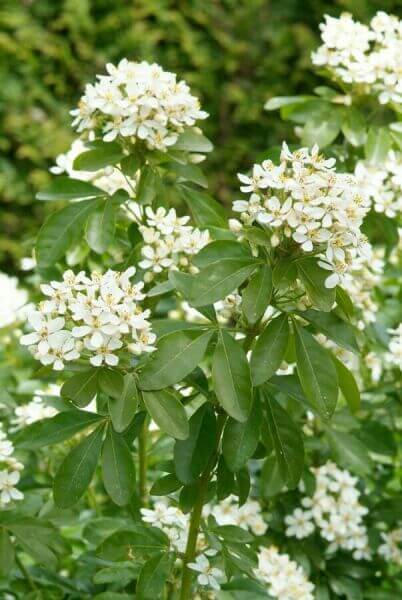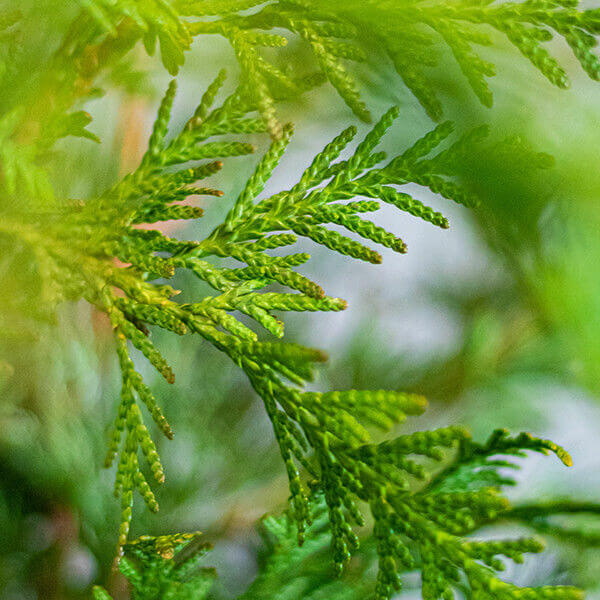Best Hedge Plants For Informal Hedges
Best Hedge Plants For Informal Hedges
Blog Article
Best Hedging Plants For Lush Borders
Enhance your garden's attraction with lavish hedge varieties such as Yew (Taxus), Thuja, Laurel, Photinia, and Bamboo, celebrated for their structural integrity and environmental advantages.
Yew and Thuja provide evergreen coverage and winter resilience, while Laurel provides quick growth and broad, fragrant leaves.
Photinia adds seasonal charm with its vibrant red foliage, and Bamboo provides a low-maintenance, peaceful ambiance.
These hedges improve air quality, reduce noise, and create tranquil, personal spaces.
Appropriate planting, spacing, and maintenance ensure energetic growth and ecological consistency.
Explore how these lavish varieties can raise your garden's beauty and well-being.
Secret Takeaways
Transform Your Garden With Lush Hedge Ranges
- Select Yew for its thick, evergreen growth and unparalleled longevity.
- Select Laurel for its quick development and broad leaves, ensuring quick privacy.
- Pick Photinia for its vibrant seasonal foliage, which turns a striking dark red.
- Use Bamboo for a low-maintenance, winter-hardy hedge with aesthetic appeal.
- Space plants 2-3 per meter and prune frequently for optimum development and health.
Popular Hedge Plants
When transforming a garden with rich hedge ranges, it's essential to think about popular hedge plants such as Yew, Thuja, Laurel, and Photinia due to their unique characteristics and benefits.
Yew (Taxus) is highly esteemed for its longevity and dense, green development, making it a prime choice for sustaining landscapes.
Thuja is noted for its evergreen foliage and robust winter season durability.
Photinia includes seasonal vibrancy with red leaves that darken in time, developing dynamic visual appeal.
Laurel offers quick development and aromatic, broad leaves, perfect for quick privacy.
Furthermore, Bamboo is an exceptional option for atmosphere, providing a low-maintenance, winter-hardy choice that enhances the garden's aesthetic with its classy, swaying walking canes.
These choices accommodate a variety of horticultural requirements and preferences.
Benefits of Garden Hedges
Garden hedges offer a plethora of advantages, making them a valuable addition to any landscape. These natural barriers are affordable to carry out and supply substantial wind security, boosting air flow and adding to sound reduction. The thick foliage of hedges like Thuja and Beech guarantees privacy by blocking exposure, creating a tranquil and remote environment.
Hedges likewise play a vital role in microclimate regulation, supplying a stable environment that cultivates plant growth and lessens temperature fluctuations. Their detailed leaf structures filter pollutants, enhancing air quality and adding to a much healthier garden community.
Additionally, hedges master sound reduction, absorbing and deflecting sound waves to lower ambient noise levels. This double performance of supplying both visual and acoustic personal privacy boosts the total serenity and visual appeal of any garden.
Planting and Maintenance Tips
For an effective hedge, careful preparation of the planting location is crucial. Guarantee the soil has appropriate pH and drainage to support strong root advancement.
Space the plants properly for the chosen types. Water the hedge regularly throughout its preliminary development stage, adjusting as required with seasonal modifications.
Carry out a organized pest control and disease prevention method, using chemical or natural treatments when essential. Frequently examine for aphids, mites, and fungal infections.
Apply mulch to keep moisture and reduce weeds. Seasonal pruning promotes dense growth and air circulation, essential for plant health.
Following these standards will help you cultivate a vibrant, properly maintained hedge that enhances the appeal of your garden.
Spacing and Cutting Guidelines
Spacing and Trimming Guidelines
Correct spacing and trimming are important for cultivating healthy, visually appealing hedges. Sufficient spacing makes sure each plant receives enough nutrients, light, and air flow.
Follow these guidelines for optimum hedge maintenance:
- Spacing: Position hedge plants 2-3 plants per meter to encourage robust development.
- Pruning Techniques: Routine pruning is essential for preserving desired hedge height and shape. Trim brand-new growth in summer season and cut down older wood during winter season.
- Seasonal Care: Adjust cutting schedules and methods according to seasonal requirements to guarantee plant health.
- Hedge Height: Frequently monitor and trim to keep the preferred hedge height and attain uniform visual appeals.
Complying with these steps will ensure your hedge flourishes, enhancing both the appeal and functionality of your garden.
Picking the Right Hedge
Picking the Right Hedge
Picking the suitable hedge involves examining factors such as fully grown height, foliage density, and environmental strength. Effective hedge plant selection needs comprehending each types' development characteristics and site-specific adaptability.
For example, Yew (Taxus) offers outstanding durability and dense development, while Browse around this site Thuja is notable for its winter durability. Furthermore, considering upkeep requirements is essential; fast-growing types like Laurel or Privet need regular trimming, whereas low-maintenance choices like Bamboo or Ivy may be preferable for those seeking very little upkeep.
Environmental elements such as soil type, light availability, and wetness conditions should likewise guide the selection procedure. This mindful technique makes sure the selected hedges will grow, providing both aesthetic and functional advantages to the garden landscape.
Shipment and Planting Advice
To guarantee your hedge plants thrive, they must be provided by specialized carriers and planted promptly upon arrival.
Follow these essential steps for effective planting:
- Soil Preparation: Enrich the soil with raw material to enhance drain and nutrient material.
- Planting Depth: Produce a trench two times the width and equal to the depth of the root ball.
- Watering Methods: Water completely after planting, keeping the soil consistently damp but not saturated.
- Mulching: Apply a layer of mulch to keep wetness and suppress weeds.
Consumer Assistance and Service
Offered the important role of timely support in horticultural pursuits, our client assistance group is readily available six days a week through telephone, email, and social media to use professional guidance and swiftly attend to any issues. Their commitment to fast reaction times ensures consumer fulfillment by solving questions associated with plant health, optimal planting approaches, and maintenance schedules.

----------------------
Within 24 hours
Social network
This thorough support group, enhanced by an excellent 9.3/ 10 customer score, highlights our dedication to boosting the gardening experience for every client.
Frequently Asked Concerns
For How Long Does It Take for Hedge Plants to Establish?
Hedge plants normally need one to 3 years to become fully developed, with the exact period differing by types and growing conditions.
Reliable care throughout this vital period is essential for robust growth. Constant watering, alert weed control, and suitable fertilizer application are essential in promoting strong root development.
For example, fast-growing types like Laurel may develop more quickly, while slower-growing varieties such as Yew might take longer. Thorough upkeep speeds up the establishment process, leading to healthy and dense hedges.
What Are the very best Hedge Plants for Privacy?
The concern of the finest hedge plants for personal privacy involves examining evergreen and deciduous alternatives.
Evergreen hedges like Thuja, Laurel, and Cypress provide year-round coverage, ensuring continuous privacy.
In contrast, deciduous hedges such as Beech use seasonal privacy, shedding leaves in colder months.
Secret maintenance pointers for personal privacy hedges include regular cutting, fertilizing in spring, and proper spacing-- generally 2 to 3 plants per meter.
In addition, constant watering and diligent weed elimination are essential for promoting healthy, thick development.
Can Hedge Plants Bring In Wildlife to My Garden?
Yes, hedge plants can bring in wildlife to your garden by offering vital advantages like shelter, food, and nesting websites, consequently improving regional biodiversity. Yew, holly, and laurel are excellent for attracting birds, while ivy supports a variety of insects.
Nevertheless, it is necessary to note that there are some downsides, such as increased upkeep to handle insects and routine maintenance. Carefully picking and maintaining hedge varieties can help balance these downsides and benefits, ultimately fostering a lively and sustainable ecosystem in your garden.
Are There Any Blooming Hedge Plants Available?
Yes, there are flowering hedge plants readily available that can improve the beauty of your garden.
For example, Elaeagnus, also understood as Olive Willow, produces aromatic white flowers in the fall, adding a touch of elegance.
Photinia, another popular option, showcases dynamic red leaves that grow into a rich green, producing a dynamic visual result throughout the seasons.
To make sure these plants thrive, it's important to practice correct pruning methods and seasonal maintenance, such as trimming brand-new development in the summer and cutting back in the winter season.
These measures will assist maintain the health and visual appeal of your blooming hedges.
How Do I Avoid Pests in My Hedge Plants?
To prevent bugs in hedge plants, use natural insect control methods and maintain correct hedge care. Present useful pests like ladybugs, which prey on hazardous bugs, to develop a balanced ecosystem.
Frequently inspect your hedges for indications of invasion and promptly eliminate any affected parts to prevent the spread. Ensure the health of your hedges by applying well balanced fertilizers and supplying adequate water.
Use mulching to maintain soil wetness and correct spacing to lower plant stress and promote robust development. These practices jointly assist in lessening bug problems and preserving a healthy hedge.
Conclusion
In essence, selecting the right hedge varieties such as Yew, Thuja, and Laurel can change any garden into a serene haven. These plants offer year-round plant, enhance visual appeal, and deal practical benefits like noise reduction and wind defense.
Appropriate planting techniques, precise spacing, consistent watering, and seasonal trimming are essential for ideal development.
Trusted shipment services and skilled client assistance make sure a seamless experience from purchase to planting, making it easier than ever to elevate your outside area.
Garden hedges offer a plethora of benefits, making them an important addition to any landscape. These natural barriers are cost-effective to carry out and provide substantial wind defense, enhancing air blood circulation and contributing to sound reduction. The dense foliage of hedges like Thuja and Beech guarantees personal privacy by blocking visibility, producing a secluded and tranquil environment.

Pruning Techniques: Regular pruning is important for preserving desired hedge height and shape. Trim brand-new growth in summer and cut back older wood during winter.
Report this page